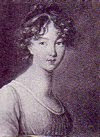I like to knit tiny things so this year I made ornaments for
a Halloween “tree” which is really a fallen branch from the woods. It stands in
my office and the ornaments are made from a variety of published patterns and
some of my own invention. All of them are scattered across my Ravelry project
page although some of them still need their individual photos. Pumpkin Man has
already appeared in this blog, and The Spider is from the classic Charted
Knitting Design: A Third Treasury of Knitting Patterns by Barbara G. Walker. It
is knit in the most awful nameless acrylic I have had in my stash forever and
that has a nice sheen to it – perfect for the project!
I also put up this little quilt that I made some years ago.
It is entirely hand foundation pieced in cotton fabrics and embellished with
beads. The quilt measures 9 ¼” wide and 10 ½” tall.
I adore the autumn – all the wonderful greens, reds,
burgundies, oranges, golds, yellows, browns, burnt umbers, even pinks, and all here and gone so quickly.
I don’t like horror but I do like the history of the celebrations and
ceremonies of this time of the year. Of course, witches come to mind, and,
although there is no connection with Halloween, I see everything through the eyes
of history so the victims of the Salem Witch Trials come to mind. I was
fortunate enough to visit the Tercentenary memorial a few years ago in early
November.
It was a damp, misty day but some of the gorgeous New
England foliage was still on a few trees and the ground, and, movingly, there
were single stemmed flowers on a few of the memorial benches.
Growing up in a family that loves history, I have spent my
entire life visiting historic sites, houses and memorials. This is one of my
favourites. Its simplicity is deceptive, its message supremely powerful. When I was there it was fairly empty
and so quiet in complete contrast to the hysteria and outrage of the subject of
commemoration. The heartbreaking collection of carved names, fates and
statements were shiny with rain, like tears, and splattered with fallen leaves,
as were the rough stone seats – reminders of true horror. Across the edge of
the entrance area, carved in rough flagstones, were the defiant pleas of the accused,
so the visitor sees them as he or she arrives and, once again, upon leaving.
























